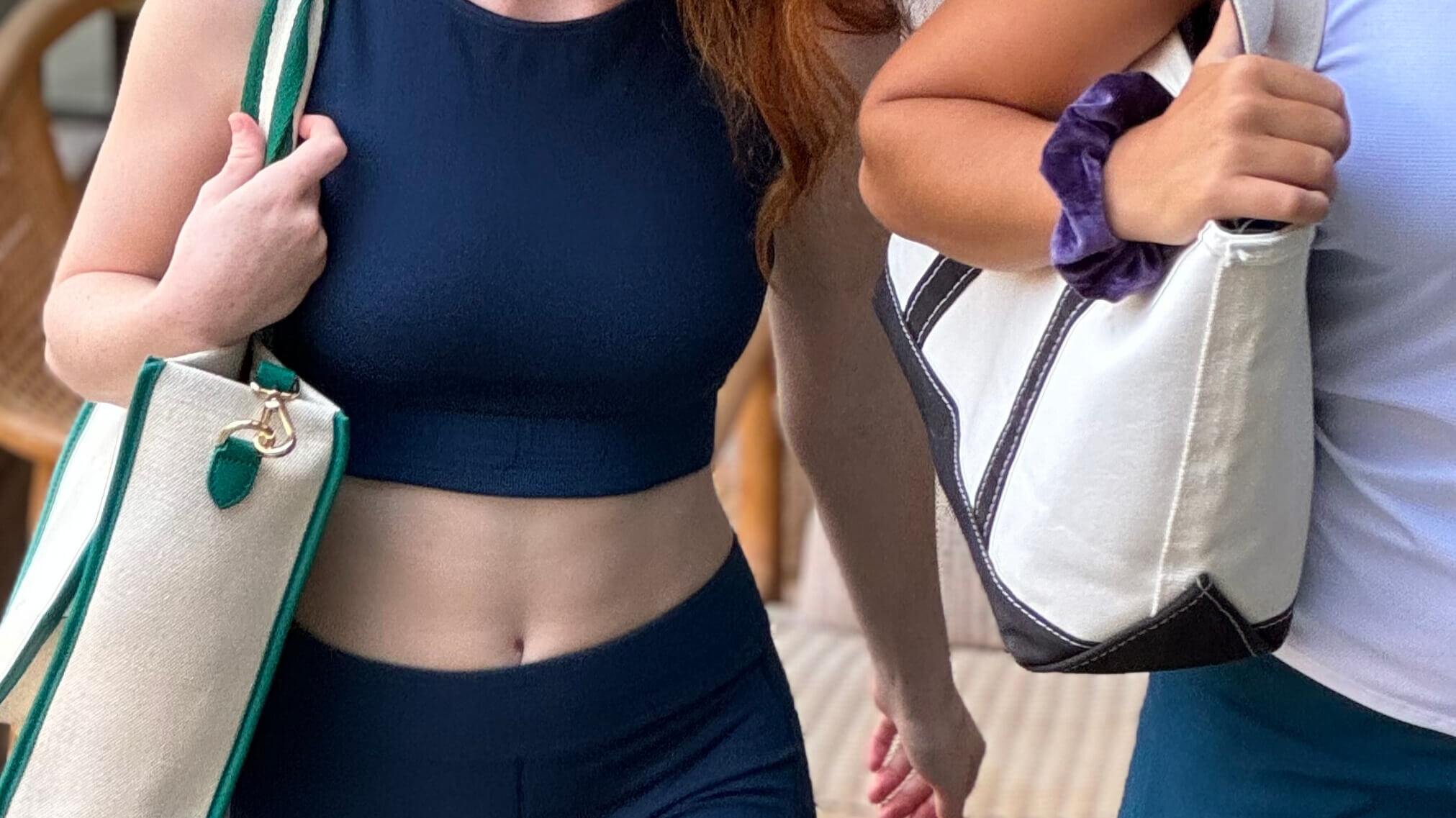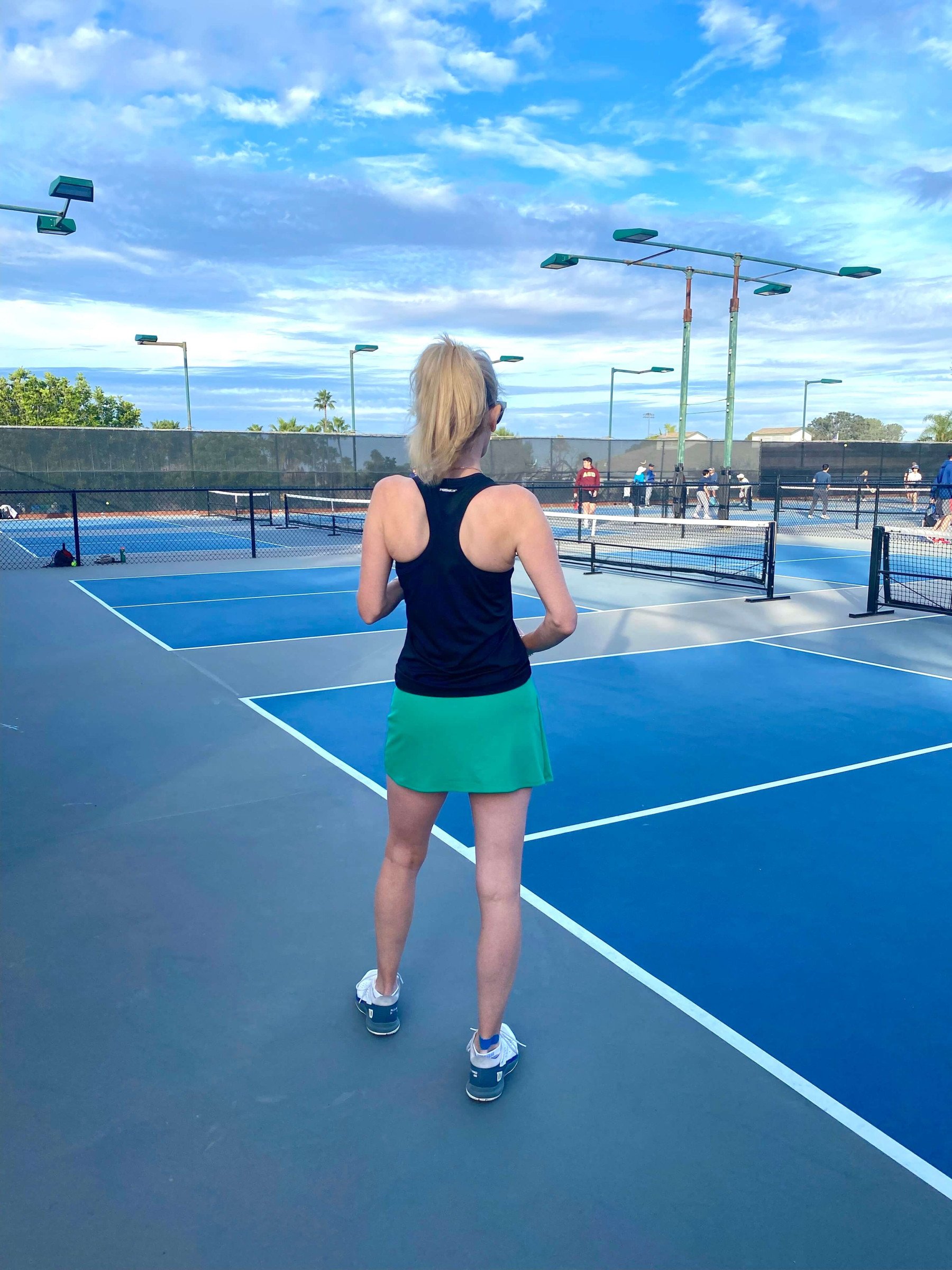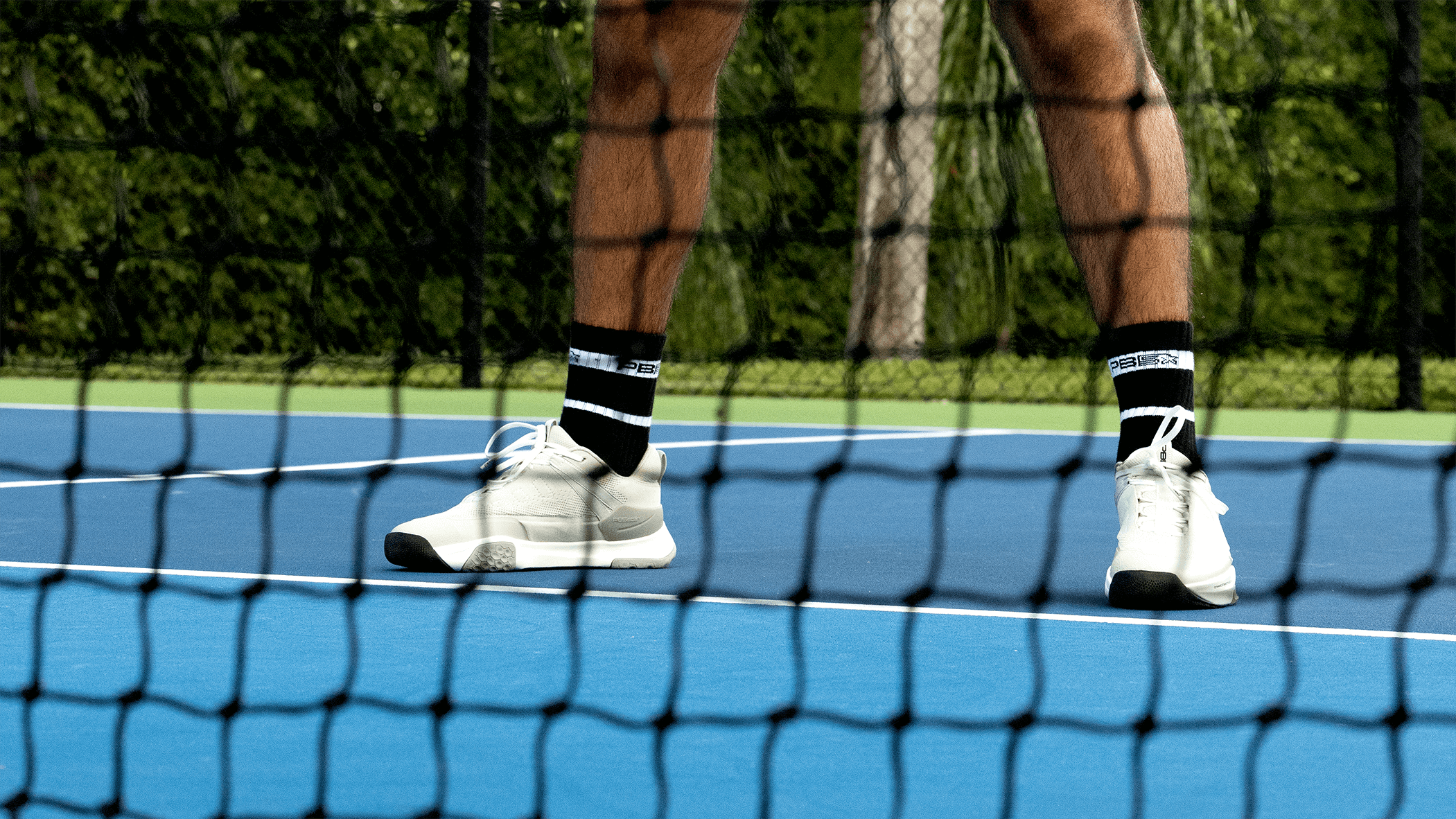Key takeaways
Solo pickleball practice at home enhances your skills by providing a flexible and personalized training environment.
Structuring practice sessions with a variety of drills (wall drills, paddle control exercises, footwork training, and precision development) creates a comprehensive training program.
Even 15-20 minutes of focused practice at home a few times weekly can dramatically improve your confidence and competitive edge
Transforming your space into a personal training ground can boost your performance on the court. Consistent home practice builds muscle memory, shot precision, and strategic awareness. Even 15-20 minutes of focused practice a few times weekly can dramatically improve your confidence and competitive edge, all without leaving your house.
If you want to know how to practice pickleball at home effectively, this article will show you how to create a home practice setup that actually works. We'll cover everything from the gear you need to the drills that target each part of your game. You'll learn simple ways to make the most of your space, structure effective practice sessions, and keep track of your improvements.
Benefits of at-home pickleball practice
Home practice sessions offer opportunities to refine your game in ways that occasional matches can't provide. The consistency and convenience of practicing in your own space creates a foundation for steady skill development.
Builds muscle memory: Your body learns through repetition, and home practice gives you plenty of chances to groove those movements
Improves shot consistency: Without opponents waiting their turn, you can focus on making the same shot correctly dozens of times
Targets weak areas: Notice your backhand needs work? Home practice is perfect for drilling those challenging shots
Prevents skill regression: Keep your skills sharp between games so you don't start each match feeling rusty
Enables frequent practice: Even 15-20 minutes a few times a week can make a noticeable difference in your game
Develops confidence: Master techniques in your own space before testing them out during actual play
Saves money: Get more practice time without paying for additional court rentals
Allows for experimentation: Try new grips, stances, or strategies without worrying about losing points
Equipment for home training
Creating an effective home practice environment requires the right tools. Here's the essential equipment that will transform your space into a pickleball training center:
Core equipment
Here are some of the things you need to make the most of your practice sessions,
Quality paddle: A responsive paddle provides consistent feedback during solo drills. Choose one with balanced weight distribution to prevent fatigue and a comfortable grip for extended practice sessions. The PB5star Balance Paddle delivers on all these qualities with its balanced weight, ergonomic grip, and responsive fiberglass face.
Practice balls: Keep a variety on hand:
Indoor balls for confined spaces and controlled practice
Outdoor balls for more realistic bounce and weight
Drill balls (slightly softer) for wall practice to reduce noise and wall damage
Portable net system: A compact, adjustable net allows for service practice from regulation height, volley drills against a real target, and quick setup and takedown for flexible training.
Drill-specific tools
Level up with these specialized training aids that add challenge and precision to your practice sessions.
Rebound net: This specialized training tool returns balls automatically for continuous practice. It allows for varied return angles to improve reactions and provides solo drilling without needing wall space.
Agility markers: Simple cones or spots create footwork patterns and movement drills. They mark targets for placement practice and define boundaries for confined spaces.
Target systems: Improve accuracy with wall targets (adhesive or magnetic), floor targets for drop and placement drills, and hanging targets for precision volleys.
Pickleball home practice drills
Proper drills and quality equipment can make home practice effective and exciting. Here's how to energize your training routine and see real results on the court.
Quick-fire wall drills
Try the Tempo Challenge by hitting the ball against a wall as many times as possible in 30 seconds, counting aloud to track progress. This drill sharpens your reflexes and helps build that natural rhythm in your game.
For shot placement, create a Height Control Ladder with tape marking different heights on your wall, then practice hitting sequences that alternate between these targets.
Develop court movement with Rapid-Fire Transitions by marking three positions on your floor (dinking, mid-court, baseline) and cycling between them while maintaining a continuous rally with the wall.
Solo paddle control drills
Fine-tune your touch with the Hovering Challenge by balancing a ball on your paddle while walking through a course.
Build extreme control with Paddle Edge Mastery by repeatedly bouncing the ball on the edge of your paddle.
Add a dynamic element with the Around-The-Body Circuit by continuously bouncing the ball while moving your paddle around your back, under your legs, and over your head without dropping the ball.
Footwork and agility boosters
Improve your court coverage with the Shadow Defense Drill by setting up four cones in a diamond pattern and practicing rapid movement between positions while maintaining proper form.
Sharpen your reflexes with the Ball Drop Reaction Test, attempting to hit dropped balls before the second bounce.
Develop rhythmic movement using Split-Step Rhythm Training by performing split-steps in time with music or a metronome while shadowboxing shots.
Power and precision development
Perfect your precision with the Wall Target Challenge by placing sticky notes or tape targets on your wall, aiming for specific sequences to improve accuracy.
Master dinking with the Kitchen Line Precision drill by drawing a line at net height and practicing shots that land just above it.
Develop controlled power with the Progressive Power Drill by gradually increasing shot force while maintaining accuracy from increasing distances from the wall.
Integrated practice approaches
Mix up your practice with the Circuit Trainer by rotating through 2-minute stations for different techniques.
Add strategic thinking with Game Simulation by practicing shots appropriate to imagined game scenarios and scores.
Build consistency with The Daily Five by identifying your weakest skills and dedicating just 3 minutes to each every day.
Keep sessions varied, practice with specific goals in mind, track your progress, and reward consistent effort for maximum benefit. Even short, focused practice sessions at home can dramatically improve your on-court performance when done regularly. Combining quality equipment and purposeful drills creates the perfect formula for pickleball improvement.
Tips for successful pickleball practice at home
Practicing at home is a fantastic way to develop your skills, refine your technique, and build muscle memory. With the right setup and a structured approach, you can make significant progress right in your own space.
Set up your space effectively
Room clearance: Remove furniture and obstacles to create at least a 15' x 10' practice area
Surface selection: Practice on similar surfaces to courts when possible (concrete, sport court, etc.)
Wall requirements: Choose a flat, unobstructed wall with minimal windows or fixtures
Height markings: Add tape lines at net height (34") and kitchen line distance (7') from the wall
Lighting conditions: Ensure adequate lighting to track the ball easily, especially for reaction drills
Structure your practice sessions
Establish a schedule: Commit to specific practice times to build consistency
Use a timer: Break practice into focused intervals (5-10 minutes per drill)
Warm up properly: Begin with 5 minutes of dynamic stretching and light paddle work
Progressive difficulty: Start with basic drills and gradually increase complexity
Cool down: End with gentle stretching to prevent stiffness
Master the fundamentals
Grip practice: Regularly check your grip without looking down at your hand
Ready position: Practice returning to ready position between each shot
Weight transfer: Focus on proper footwork and weight shift during strokes
Kitchen awareness: Mark your kitchen line and practice respecting it during drills
Follow-through: Complete your stroke motions fully, even during slow practice
Solo drill techniques
Shadow play: Practice swing mechanics without hitting a ball to perfect form
Controlled bouncing: Maintain continuous ball contact on your paddle while moving
Wall rally variations: Hit against the wall at different heights, speeds, and distances
Target practice: Place targets on your wall or floor to improve shot placement
Video recording: Record your practice sessions to analyze your technique
Simulate game situations
Serve practice: Mark target zones and practice different serve styles
Third shot drop: Practice soft, controlled shots from baseline to kitchen line
Dink patterns: Create sequences of dink locations to practice against the wall
Reaction drills: Have someone randomly call out shot types you must quickly execute
Game scenario visualization: Mentally work through common game situations
Train at home with PB5star
You don't need a professional court to improve your game - just some space at home, basic equipment, and a bit of creativity. Even short, focused practice sessions can make a huge difference in your performance when you return to actual gameplay. Plus, practicing at home lets you work on your weaknesses without feeling pressured.
Consistent practice builds muscle memories that make your shots more automatic and reliable. By making these home drills part of your regular routine, you'll notice improvements in your consistency and reaction time. For comfortable gear that would help in your home training, check out our selection at PB5star.







